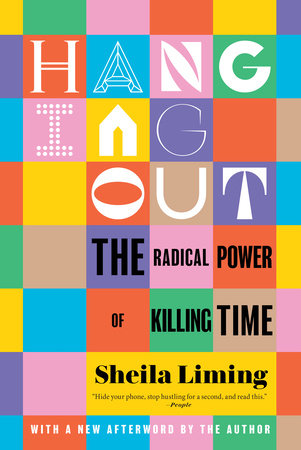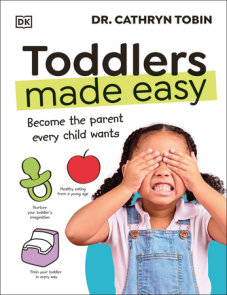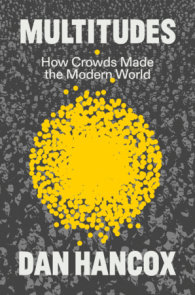READERS GUIDE
HANGING OUTThe Radical Power of Killing Time
Sheila Liming
Hardcover 978-1-68589-005-6
eBook 978-1-68589-006-3
“Like me, you will thoroughly enjoy hanging out with this book. Jam-packed with eloquent and authentic testimony, it
delivers many fresh insights on experiences that we might otherwise take for granted.”
—Andrew Ross, author of Nice Work If You Can Get It: Life and Labor in Precarious Times
“Tightly argued, brilliantly written … smart yet so accessible, Hanging Out will impress readers with the way each idea builds on the next, never forced and always human.”
—Shelf Awareness
INTRODUCTION
Almost every day it seems that our world becomes more fractured, more digital, and more chaotic. Sheila Liming has the answer: we need to hang out more.
Starting with the assumption that play is to children as hanging out is to adults, Liming makes a brilliant case for the necessity of unstructured social time as a key element of our cultural vitality. The book asks questions like what is hanging out? why is it important? why do we do it?how do we do it? and examines the various ways we hang out—in groups, online, at parties, at work.
Hanging Out: The Radical Power of Killing Time makes an intelligent case for the importance of this most casual of social structures, and shows us how just getting together can be a potent act of resistance all on its own.
CONVERSATION STARTERS
1. Why would anyone need a book about hanging out? What justifications does the author give for having written this book? Do you agree with her assessment?
2. Liming writes that “ complaints against hanging out are often framed in racist or classist terms.” Do you agree with this? Can you think of any examples?
3. The author suggests hanging out can be construed as an act of resistance. Do you agree? If so, in what ways is hanging out an act of resistance?
4. Liming says that “the jam, unlike the performance, has no true beginning and thus no end.” How does this relate to the concept of hanging out?
5. Liming considers Covid-19 to have “brought about a confrontation … with the prospect of solitude.” How has the pandemic impacted the way you hang out, both on and offline?
6. In Chapter 5, the author makes reference to the famous concept of the “third place ”—that is, a place that is neither home nor work. How have third places changed in recent years? Do they still exist? How do they fit into contemporary day-to-day life?
7. Liming observes that “time is a commodity in our modern world.” Has this always been true? If not, when did it start to change? How is time different from physical commodities? How is it the same?
8. What do you make of Liming ’ s four concluding suggestions for how to hang out? (Take time, take risks, take—and create opportunities, and take care.) Can you think of any other suggestions to add to this list?
9. Can you think of other modes of hanging out that the author has not included?
10. Have you ever thought about what the act of hanging out means in a sociological context before picking up this book? Has your way of thinking about hanging out changed after reading it?
ABOUT THE AUTHOR
Sheila Liming is an associate professor at Champlain College in Burlington, Vermont, where she teaches classes on literature, media, and writing. She is the author of two books, What a Library Means to a Woman and Office, and the editor of a new edition of Edith Wharton’s The Age of Innocence. Her essays have appeared in venues like The Atlantic, McSweeney’s, Lapham’s Quarterly, The Los Angeles Review of Books, Public Books, and The Point.
MORE TO DISCOVER
Find more resources for your book club at www.mhpbooks.com.




















